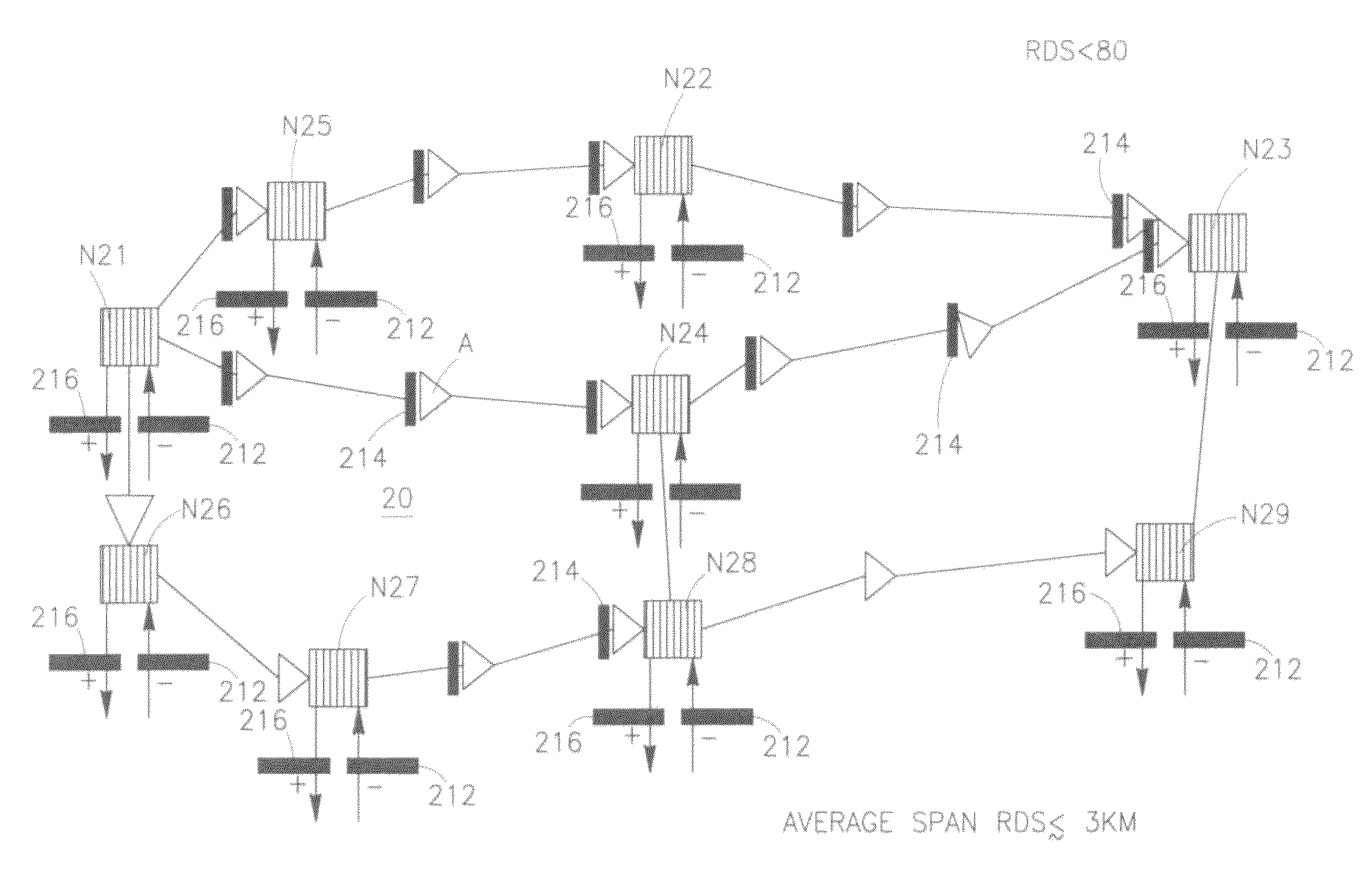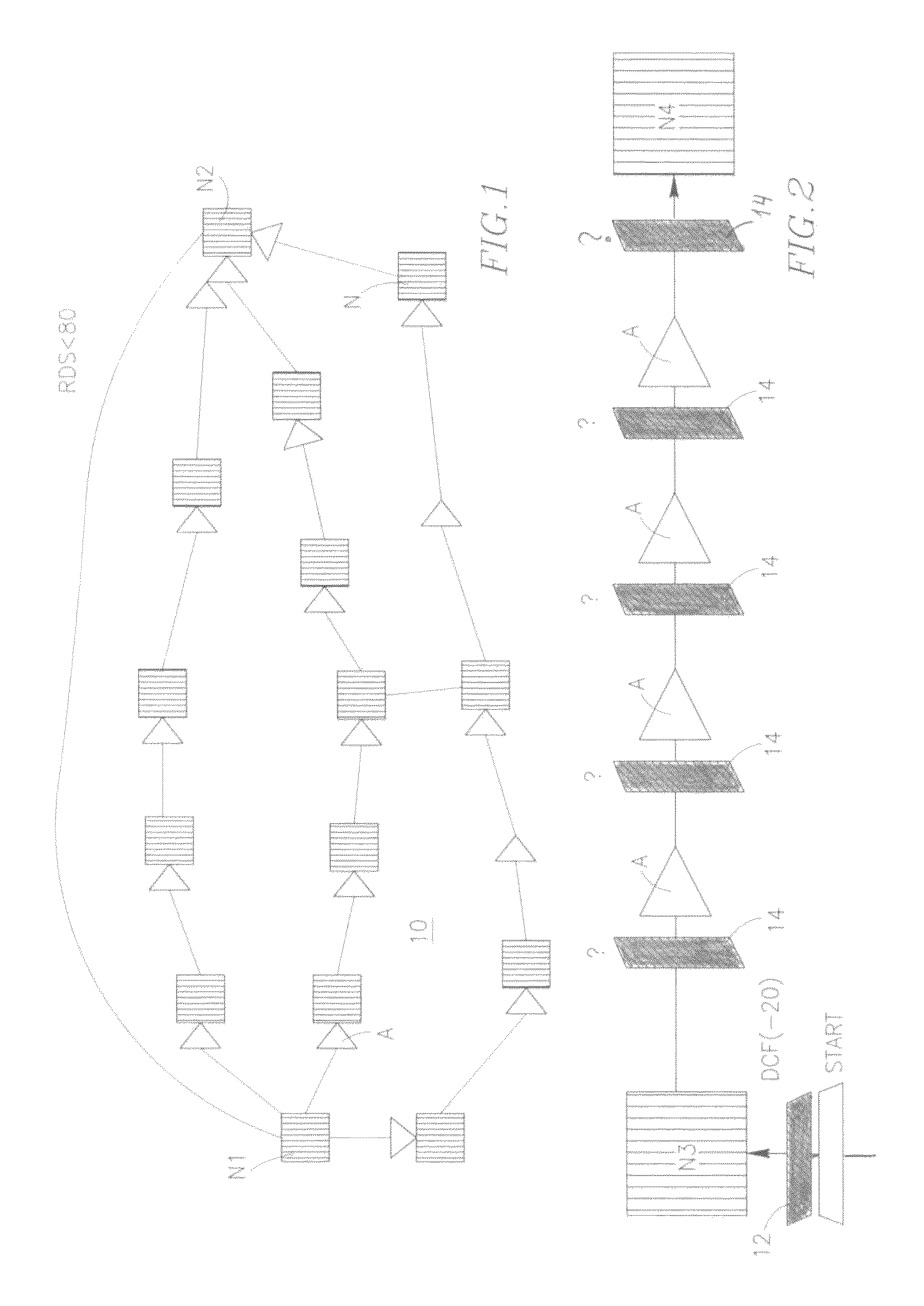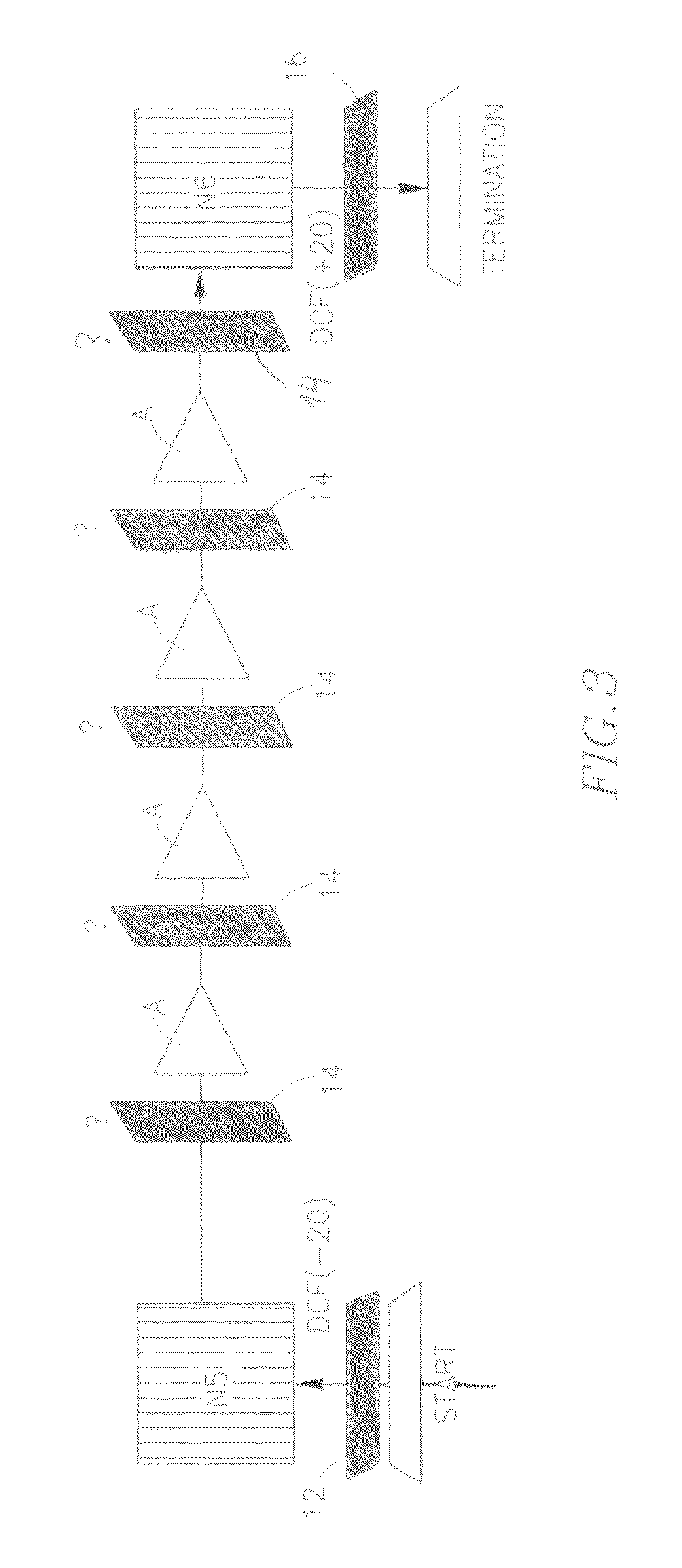Method for dispersion compensation in a mesh optical network, and a network using same
a technology of optical network and mesh, applied in multiplex communication, electrical apparatus, wavelength-division multiplex systems, etc., can solve problems such as non-minimizing and serious problems such as dispersion mapping
- Summary
- Abstract
- Description
- Claims
- Application Information
AI Technical Summary
Benefits of technology
Problems solved by technology
Method used
Image
Examples
Embodiment Construction
[0073]FIG. 1 shows an optical mesh network 10 comprising a plurality of nodes schematically illustrated by hatched boxes N (N1, N2 . . . ). The nodes are interconnected by links, each equipped by at least one optical amplifier (schematically shown by triangles A). Trails of traffic services may be formed between each two nodes of the network. It is accepted in practice that for traffic services having bit rate 10 GB / s, a trail (say, the trail between N1 and N2) should have a positive total (trail) residual dispersion RDS being lower than 80 km. The total RDS1-N2 (see a solid thick line) is schematically marked in the drawing near the line.
[0074]There is another (second) practical requirement for traffic of 10 Gbps, which has been noticed by the Inventor. The RSD of the last span of the trail should be greater than of about +20 km. But now let us look at the drawing and ask: “which span in the mesh network can be considered to be the last span?” or practically “which span should be p...
PUM
 Login to View More
Login to View More Abstract
Description
Claims
Application Information
 Login to View More
Login to View More - R&D
- Intellectual Property
- Life Sciences
- Materials
- Tech Scout
- Unparalleled Data Quality
- Higher Quality Content
- 60% Fewer Hallucinations
Browse by: Latest US Patents, China's latest patents, Technical Efficacy Thesaurus, Application Domain, Technology Topic, Popular Technical Reports.
© 2025 PatSnap. All rights reserved.Legal|Privacy policy|Modern Slavery Act Transparency Statement|Sitemap|About US| Contact US: help@patsnap.com



